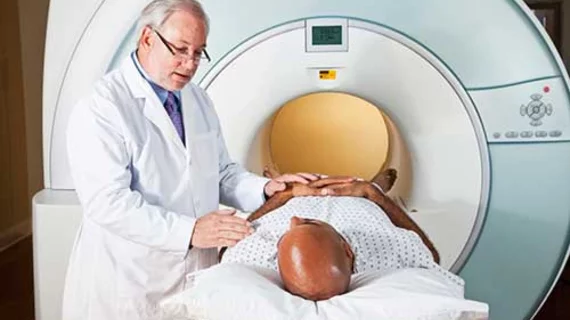New study highlights dangers of metallic fabrics in face masks, athletic clothing for MRI patients
A new Current Problems in Diagnostic Radiology study set out to examine the role that different fabrics may play in causing thermal burns, finding that metallic fabrics increasingly used in items such as face masks and athletic clothing can be especially problematic.[1]
The trend of using metallic threads in clothing items is relatively recent, the study notes, and awareness of their existence is low. Additionally, many clothing items have incomplete labeling; for example, the authors cited a case where a man wearing jogging pants labeled as 100% polyester received second-degree burns while undergoing an MRI.
This means that unlike obviously risky ornaments such as metallic zippers, buttons, jewelry, and metallic nose clips on face masks, which are easy for patients and medical professionals to identify and remove prior to MRI, these newer fabrics may fall under the radar.
‘Although [ACR and FDA] guidelines are in place to prevent thermal injuries due to fabric interactions during MR imaging, incomplete labeling, failure to heed safety guidelines, and a lack of awareness still contribute to their occurrence,” wrote authors Tara Styan, of the University of British Columbia, and Michael Hoff, PhD, of the University of Washington.
In addition to fabrics containing metallic fibers, the authors also identified some heat-retardant fabrics as potentially problematic, citing an example where a patient’s heat-retardant undershirt trapped heat and sweat to her body in a way that caused a burning sensation.
As a best practice, the authors recommend using hospital-provided clothing confirmed to be made of MR-safe fabrics in order to avoid burn risks.
“Patients should be informed about the danger of fabric-MR interactions, changed into approved gowns and MR-safe masks before procedures, and encouraged to alert staff if any burning sensations arise.”
Alternatively, staff should be on high alert for potential issues, and should be aware that even screening tools and techniques such as handheld or gate metal detectors, scar inspection, prior imaging examination, and high-resolution digital radiography do not always accurately detect metallic fabrics.
“MR personnel should consider all fabric MR unsafe unless proven otherwise. This entails not relying on labels or screening methods to identify metallic components, and directly communicating with manufacturers when necessary,” concluded Styan and Hoff.
